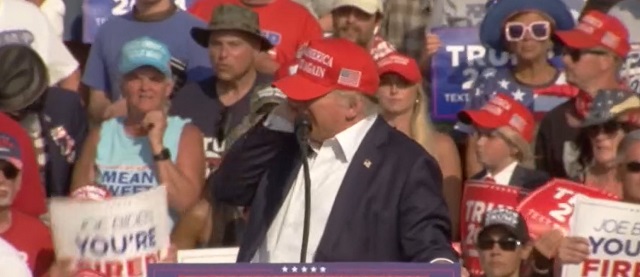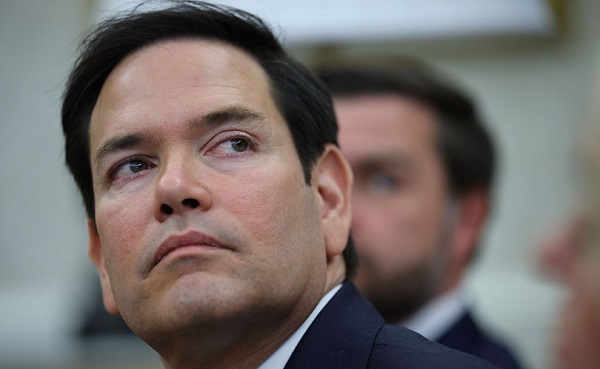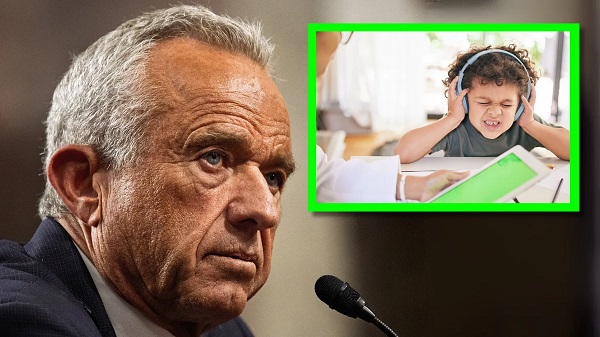International
‘Fingers Being Pointed’: Secret Service’s Explanations For Security Failures Ahead Of Trump Assassination Attempt Aren’t Adding Up

 From the Daily Caller News Foundation
From the Daily Caller News Foundation
Secret Service’s explanations for the security failures surrounding the assassination attempt against former President Donald Trump at a rally on Saturday aren’t adding up, according to security experts and former Secret Service agents.
Emerging details highlight what seems to be a disconnect between local officials and Secret Service, while making it more apparent that there were major oversights. Many key questions hinge on the responsibilities delegated to local police, who U.S. Secret Service Director Kimberly Cheatle confirmed during a Monday interview with ABC News were inside the building the shooter fired from, though nobody was stationed on the rooftop.
Cheatle explained a decision was made not to put anybody on top of the building because the “sloped” roof made it unsafe, but security experts and former Secret Service agents who spoke with the Daily Caller News Foundation emphasized not having someone on the roof was a “big failure” and didn’t believe Cheatle’s explanation was sufficient.
“Let’s just say the local law enforcement officers [and] the Secret Service agree that it’s just not safe to keep someone up there for a couple of hours,” former Secret Service agent Anthony Cangelosi told the DCNF. “Then the question is, well, how do we maintain its integrity otherwise? It’s not like you just throw your hands up and say ‘can’t do that.’”
Cangelosi said there is no “justifiable reason” for failing to cover the roof, suggesting they should have found solutions like putting another platform up or getting an officer on a lift.
Peter Yachmetz, retired FBI agent and principal security consultant at Yachmetz Consulting Group, pointed out that the shooter was moving around on the “unsafe” roof prior to the incident.
“The slope didn’t affect him,” Yachmetz told the DCNF.
JUST IN: USSS director Kim Cheatle says sn*pers weren't on the roof where Thomas Crooks shot from because it was "sloped" and unsafe.
Ironically, the sn*pers who were behind Trump during the rally were on a sloped roof.
"That building in particular has a sloped roof at its… pic.twitter.com/Vg36tXr9rJ
— Collin Rugg (@CollinRugg) July 16, 2024
Law enforcement reportedly spotted the shooter on the roof 30 minutes before shots were fired, WPXI reported Monday. After the incident, a witness described watching a man climbing onto the roof and trying to warn a police officer, claiming officials responded with confusion.
“The reality is, regardless of the spin, that particular roof should have been under constant surveillance and or posted,” former secret service agent Tim Miller told the DCNF.
Here's video of the 20-year-old gunman, on the roof in a prone position, opening fire at the Donald Trump rally in Butler, PA.
Shots ring out and panic ensues before the shooter is himself shot and killed seconds later.
Video acquired by TMZ.
More: https://t.co/72O4XtmVwA pic.twitter.com/t6M8a09fbK— michael j. babcock (@mikejbabcock) July 14, 2024
“In this particular instance, we did share support for that particular site and that the Secret Service was responsible for the inner perimeter,” Cheatle told ABC News Monday during an interview. “And then we sought assistance from our local counterparts for the outer perimeter. There was local police in that building — there was local police in the area that were responsible for the outer perimeter of the building.”
However, a local law enforcement official told The New York Times Tuesday that the local forces were in an adjacent building, not the one the shooter was firing from.
The discrepancies in their accounts only add to the uncertainties surrounding who was responsible.
CBS News reported Monday that there were three snipers stationed inside the building shooter Thomas Matthew Crooks fired from, citing a local law enforcement officer. One of the snipers saw Crooks looking through a rangefinder in the minutes before he fired and radioed command post, according to CBS News.
The Butler Township Police Department declined to confirm the report to the DCNF, stating that there is an ongoing investigation by the FBI.
Butler County Sheriff Michael Slupe declined to offer additional comments Tuesday, telling the DCNF he is “backing away from media requests for comment and opinions.”
“There are too many questions being posed that I do not have first hand knowledge of and too many fingers being pointed,” he said. “I am in charge of the Deputy Sheriffs and no other law enforcement agency. My Deputies performed their duties at their assigned areas and went above and beyond after the shooting started and ended in the their actions to help people and assist police in clearing the nearby buildings.”
Slupe previously confirmed to CNN that an armed Butler Township officer encountered Crooks before he shot at Trump, but retreated down the ladder after Crooks pointed his gun at him. He told KDKA-TV there was a security failure, but noted “there is not just one entity responsible.”
“The Secret Service plays a key role in protecting, in this case, former President Trump, but they don’t act alone,” he told the outlet. “The Secret Service receives support from local police departments.”
#NEW: CBS News just learned the image circulating online of the U.S. Secret Service counter sniper team is not the team that neutralized the gunman, per Secret Service spokesman. The sniper that killed Crooks with 1 shot was in yellow area on below diagram. @CBSNews @KDKA pic.twitter.com/XE1QEShR7P
— MEGHAN SCHILLER (@MeghanKDKA) July 16, 2024
Pennsylvania State Police, however, did confirm they had no members “inside the building or staging in it.”
“The Pennsylvania State Police provided all resources that the United States Secret Service (USSS) requested for former President Trump’s rally in Butler on Saturday, July 13th, including approximately 30 to 40 troopers to assist with securing the inside perimeter,” Pennsylvania State Police Lieutenant Adam Reed told the DCNF. “Among PSP’s duties at the rally, the Department was not responsible for securing the building or property at AGR International.”
Reed said he could not say when an officer witnessed the shooter, as it was not a state trooper who saw him.
WATCH: Trump raises fist to crowd after shots were fired at his rally in PA.
— Daily Caller (@DailyCaller) July 13, 2024
Former secret service agent Jeffrey James explained to the DCNF that protection “works in a series of concentric circles.” Typically, there is an inner circle of secret service agents, a second circle that mixes both agents and local law enforcement, and an outer ring that is largely state and local partners.
If the agent in charge of the site told a local law enforcement officer on the outer perimeter that the building is his responsibility, then anything that happens is on the officer.
“But if that agent didn’t find one of the local law enforcement partners and give very clear, direct directions…then it’s going to be the responsibility or the fault of that agent for not delegating that,” he told the DCNF.
It’s unclear what instructions the Secret Service gave to local law enforcement.
Butler County District Attorney Richard Goldinger told The Washington Post Tuesday that “Secret Service was in charge” and that “it was their responsibility to make sure that the venue and the surrounding area was secure.”
“For them to blame local law enforcement is them passing the blame when they hold the blame, in my opinion,” Goldinger told The Washington Post.
However, the Secret Service released a statement on Tuesday pushing back against assertions that they were blaming local law enforcement for the tragedy that unfolded on Saturday. “Any news suggesting the Secret Service is blaming local law enforcement for Saturday’s incident is simply not true,” the statement posted to the Secret Service’s X page said.
“I am having difficulty reconciling the answer the Director gave in her ABC interview with the official statement made on social media,” Patrick Yoes, national president of the Fraternal Order of Police, said in a press release on Tuesday. “Our goal is to provide whatever assistance the Secret Service needs to perform their mission and to do so with mutual respect, trust, and accuracy.”
A RealClearPolitics report suggested Sunday that resources were diverted away from Trump’s rally to an event where First Lady Jill Biden was speaking. Anthony Guglielmi, chief of communications for the United States Secret Service, denied this was the case.
Questions also remain about why Crooks was not taken out sooner. Cangelosi explained to the DCNF that counter-snipers can face challenges due to their distance from the target.
“With counter snipers, you’re usually so far away, it’s not usually clear whether an individual is an imminent threat, ” Cangelosi said. “It’s harder to discern. Once they discern whether that person is a threat to life or serious bodily injury, they can take the shot.”
Yachmetz questioned why drone coverage was not utilized.
“A drone strategically placed a few thousand feet above could have oversaw the entire venue,” he said.
“In my opinion, a detailed, in-depth very specific investigation must be conducted of all procedures [and] this entire matter by a non-biased outside investigative group (possibly of retired agents),” Yachmetz told the DCNF, emphasizing the investigation must not be “politically motivated.”
House Committee on Oversight and Accountability Chairman James Comer announced Monday that Cheatle would testify at a committee hearing on July 22. President Joe Biden said Sunday that he directed an “independent review” of the events.
The FBI told the DCNF it has “nothing additional to provide at this time beyond previously-issued statements.” The Bureau said Monday that it gained access to Crooks’ phone and “has conducted nearly 100 interviews of law enforcement personnel, event attendees, and other witnesses.”
Trump suffered a wound to his ear, and two were killed, including Crooks and 50-year-old ex-volunteer fire chief, Corey Comperatore. Two other attendees were also wounded the attack.
Secret Service did not respond to a request for comment.
Wallace White and Owen Klinsky contributed to this report.
Featured image credit: (Screen Capture/CSPAN)
conflict
Marco Rubio says US could soon ‘move on’ from Ukraine conflict: ‘This is not our war’

From LifeSiteNews
Secretary of State Marco Rubio is calling the EU/UK bluff here because he knows without the U.S. the EU/UK will not commit to fight Russia.
Secretary of State Marco Rubio spoke to reporters in Paris on April 18 about the prolonged peace talks between Russia and Ukraine. However, a frustrated Rubio warned that the U.S. could “move on” from its involvement in negotiations to end the war if no progress is made “within a matter of days and weeks.” That’s the mainstream media narrative.
The non-pretending summary is that Ukraine, France, Great Britain, the EU, NATO, et al are all trying to retain their interests in the conflict. Russia has simple terms, but the war machinery controlled by the intel apparatus (CIA and EU) and the financial stakeholders in the EU region are unhappy. A frustrated Secretary Rubio says, make up your mind, if no deal – we’re done.
Having followed this very closely, here’s what “we’re done” likely means.
President Trump ends the U.S. side of the proxy war. President Trump pulls back all support for Ukraine, stops sending money, weapons, and, to the extent he can, intelligence to Ukraine. This opens the door for Russia to go full combat as the ground thaws, without concern for U.S. to engage.
The EU will have to step up with funding, intelligence, and war material to continue supporting Ukraine. Rubio is calling the EU/UK bluff here because he knows without the U.S. the EU/UK will not commit to fight Russia.
Remember that if no one does anything, Russia has already gained the ground they want and will just continue grinding western Ukraine to ever-expanding rubble. Factually, doing nothing is a big win for Russia, especially if Trump withdraws.
Reprinted with permission from Conservative Treehouse.
Business
Trump considers $5K bonus for moms to increase birthrate

 MxM News
MxM News
Quick Hit:
President Trump voiced support Tuesday for a $5,000 cash bonus for new mothers, as his administration weighs policies to counter the country’s declining birthrate. The idea is part of a broader push to promote family growth and revive the American family structure.
Key Details:
- Trump said a reported “baby bonus” plan “sounds like a good idea to me” during an Oval Office interview.
- Proposals under consideration include a $5,000 birth bonus, prioritizing Fulbright scholarships for parents, and fertility education programs.
- U.S. birthrates hit a 44-year low in 2023, with fewer than 3.6 million babies born.
Diving Deeper:
President Donald Trump signaled his support Tuesday for offering financial incentives to new mothers, including a potential $5,000 cash bonus for each child born, as part of an effort to reverse America’s falling birthrate. “Sounds like a good idea to me,” Trump told The New York Post in response to reports his administration is exploring such measures.
The discussions highlight growing concern among Trump administration officials and allies about the long-term implications of declining fertility and family formation in the United States. According to the report, administration aides have been consulting with pro-family advocates and policy experts to brainstorm solutions aimed at encouraging larger families.
Among the proposals: a $5,000 direct payment to new mothers, allocating 30% of all Fulbright scholarships to married applicants or those with children, and launching federally supported fertility education programs for women. One such program would educate women on their ovulation cycles to help them better understand their reproductive health and increase their chances of conceiving.
The concern stems from sharp demographic shifts. The number of babies born in the U.S. fell to just under 3.6 million in 2023—down 76,000 from 2022 and the lowest figure since 1979. The average American family now has fewer than two children, a dramatic drop from the once-common “2.5 children” norm.
Though the birthrate briefly rose from 2021 to 2022, that bump appears to have been temporary. Additionally, the age of motherhood is trending older, with fewer teens and young women having children, while more women in their 30s and 40s are giving birth.
White House Press Secretary Karoline Leavitt underscored the administration’s commitment to families, saying, “The President wants America to be a country where all children can safely grow up and achieve the American dream.” Leavitt, herself a mother, added, “I am proud to work for a president who is taking significant action to leave a better country for the next generation.”
-

 2025 Federal Election2 days ago
2025 Federal Election2 days agoOttawa Confirms China interfering with 2025 federal election: Beijing Seeks to Block Joe Tay’s Election
-

 COVID-192 days ago
COVID-192 days agoNearly Half of “COVID-19 Deaths” Were Not Due to COVID-19 – Scientific Reports Journal
-

 2025 Federal Election2 days ago
2025 Federal Election2 days agoHow Canada’s Mainstream Media Lost the Public Trust
-

 2025 Federal Election1 day ago
2025 Federal Election1 day agoBREAKING: THE FEDERAL BRIEF THAT SHOULD SINK CARNEY
-

 2025 Federal Election2 days ago
2025 Federal Election2 days agoPOLL: Canadians want spending cuts
-

 John Stossel1 day ago
John Stossel1 day agoClimate Change Myths Part 2: Wildfires, Drought, Rising Sea Level, and Coral Reefs
-

 2025 Federal Election1 day ago
2025 Federal Election1 day agoCHINESE ELECTION THREAT WARNING: Conservative Candidate Joe Tay Paused Public Campaign
-

 Media1 day ago
Media1 day agoCBC retracts false claims about residential schools after accusing Rebel News of ‘misinformation’






